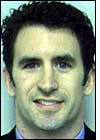With a decade of experience employing RFID technology, Shawnee Mission Medical Center (SMMC) has expanded its system to allow the real-time tracking of newborn babies and pediatric patients within its hospital. The 383-bed facility delivers 3,300 births per year—more than any other hospital in the Kansas City area.
The Safe Place Infant Security Solution 9450, installed and provided by RF Technologies, is an upgraded version of the system the company installed in 1998, shortly after a newborn infant was kidnapped from another Missouri hospital. The baby was recovered, but it took more than a week for authorities to locate the child. Although there has never been an infant abduction at Shawnee Mission, the hospital takes the security of babies very seriously, says Debbie Pahura, a pediatric specialist at SMMC’s Women’s Services Unit.
With the initial RFID system, RF Technologies installed fixed interrogators at perimeter exits and entrances. An active (battery-powered) tag on each infant patient’s wrist or ankle band transmitted a unique ID number to fixed portals mounted on doorways, at 66 kHz, whenever it came within a few feet of such portals. That data was routed to the hospital’s back-end system, where RF Technologies software provided a graphical user interface linking the tag’s ID with that particular patient, and displayed which door the baby was approaching. The transmitter on the wrist or ankle band set off an audible alarm at the doorway as well.
The problem with the original system, Pahura says, was that it experienced interference from a variety of devices, including electric toothbrushes, cellular phones and electrical storms. As a result, the hospital experienced frequent false alarms. Tom Quance, RF Technologies’ managing director in hospitals, says the company had server access and monitored such interferences, alerting SMMC when there was interference to the system. “The system is no good if you have 100, 500 alarms a month,” Quance says.
As technology evolved, Pahura adds, the hospital began seeking alternative solutions. In the meantime, RF Technologies hired a nurse to provide clinical consulting and help modify its software to be most appropriate for the health-care industry. Under the nurse’s guidance, the company designed a dashboard to assist the staff in monitoring the location of a given patient wearing an RFID tag in the hospital, as well as tracing where that patient had been.
In 2007, the hospital installed the resulting RF Technologies solution, known as the Safe Place Infant Security System, which features dual-frequency transmitters—active RFID tags that periodically emit signals at 262 kHz and 318 MHz. Doorway readers pick up the tags’ 262 kHz transmissions, while others deployed elsewhere within the facility receive their 318 MHz signals. The use of higher frequencies is one reason the number of false alarms has been reduced. Later this month, the hospital also intends to have an asset-tracking system underway.
With the new system, all babies and pediatric patients under the age of 17 are issued transmitters embedded in a wrist or ankle band. The hospital manages a server using RF Technologies software, allowing it to interpret the data from nearly 100 interrogators installed throughout the facility, in about a dozen doorways and in the ceiling approximately 20 feet apart on the single hospital floor. The readers capture tag ID numbers as patients move throughout the medical center, and that information is directed to the server via a cabled connection. Staff members can then see an icon representing a particular patient on the screen, with a 10-second delay. On the server, the transmitted ID number is linked to that child’s name and room number.
After SMMC installed the system, Quance says, the hospital conducted an abduction-response drill, which proved the system worked properly. “It’s such an amazing improvement,” Pahura states. “This installation was remarkably easy.”
The number of alarms—which had been as much as 100 per day when Shawnee Mission used the older 66 kHz RFID system—is now down to about five alarms daily, according to Deb Ohnoutka, the hospital’s director of women’s and children’s services. Such alarms are no longer caused by RF interference, but typically occur when a patient comes close to the exit, even if that person does not pass through it. The doorway readers are set to have a 2-to 4-foot read range.
Hospital employees, who previously keyed in a password to update the computer, now wave HID 2.6 GHz RFID badges (provided by RF Technologies) in front of the machine to gain access. The facility uses about 100 RFID transmitters, which activate when connected to a patient’s wrist or ankle. After patients check out, their tags are then reassigned to new arrivals.
A system such as this generally costs $75,000 to $200,000, Quance says, though he declines to specify how much the Shawnee Mission solution cost. With RF Technologies’ system, the hospital can monitor every patient’s location at any given time within an accuracy of 20 feet. The company provides reports to SMMC, outlining specifically why each alarm occurred. Most false alarms at the center are due to user error, such as an individual walking too close to the doorway.
Later this month, the hospital intends to begin applying RF Technologies’ active tags to a limited number of assets as well, for use with the same system. While RF Technologies has not indicated which assets it would begin tagging, it currently has 30 to 40 other facilities nationwide using Safe Place tags on such equipment as fetal Dopplers, breast pumps, stethoscopes, portable thermometers and portable ultrasound machines.




